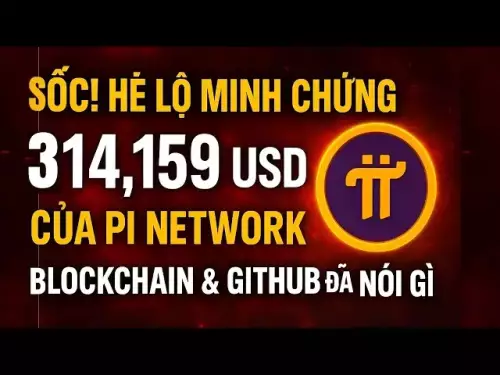-
 bitcoin
bitcoin $109547.008142 USD
0.04% -
 ethereum
ethereum $4011.838726 USD
-0.05% -
 tether
tether $1.000402 USD
-0.01% -
 xrp
xrp $2.798606 USD
0.88% -
 bnb
bnb $970.877944 USD
1.39% -
 solana
solana $202.237275 USD
-0.95% -
 usd-coin
usd-coin $0.999673 USD
0.00% -
 dogecoin
dogecoin $0.229294 USD
-1.15% -
 tron
tron $0.336370 USD
-0.45% -
 cardano
cardano $0.777260 USD
-1.66% -
 hyperliquid
hyperliquid $45.503019 USD
1.73% -
 ethena-usde
ethena-usde $1.000362 USD
0.01% -
 chainlink
chainlink $20.785303 USD
-1.10% -
 avalanche
avalanche $28.755822 USD
-0.11% -
 stellar
stellar $0.358303 USD
-0.48%
How to avoid high fees on Bitstamp
Use stablecoins like USDt or USDc for transfers on Bitstamp to avoid fiat conversion and withdrawal fees while maintaining dollar-pegged value.
Sep 13, 2025 at 06:01 pm

Understanding Bitstamp Fee Structure
1. Bitstamp operates on a tiered fee model based on your trading volume over the past 30 days. The more you trade, the lower your fees become. Users are categorized into different levels, ranging from retail to institutional tiers, each with distinct maker and taker rates.
2. Maker fees apply when you place an order that doesn’t immediately execute—adding liquidity to the order book. Taker fees are charged when you remove liquidity by filling an existing order. Makers usually pay lower fees than takers, so placing limit orders instead of market orders can reduce costs.
3. Deposit fees vary depending on the method. Bank transfers in EUR via SEPA are free, but credit card deposits incur a percentage-based charge. Withdrawals also carry fixed fees, especially for cryptocurrencies, which fluctuate with network congestion.
4. External blockchain fees are separate from Bitstamp’s own charges. When withdrawing crypto, you’re subject to network transaction fees, which depend on the current load of networks like Bitcoin or Ethereum. Timing withdrawals during low-traffic periods can minimize these costs.
5. Corporate accounts may qualify for negotiated fee schedules. High-volume traders should contact Bitstamp’s sales team to explore discounted rates or rebates based on consistent volume commitments.
Strategies to Minimize Trading Fees
1. Focus on using limit orders rather than market orders to benefit from lower maker fees. By setting a price slightly off the current market rate, your order waits in the book and qualifies for reduced pricing.
2. Consolidate trades to maximize 30-day volume. Spreading small trades across multiple platforms dilutes your volume on Bitstamp, keeping you in higher-fee brackets. Centralizing activity here can elevate your tier status.
3. Use stablecoins like USDt or USDc for intra-platform transfers instead of converting to fiat. This avoids withdrawal and currency conversion fees while maintaining exposure to dollar-pegged assets.
4. Monitor your monthly trading statistics through Bitstamp’s dashboard. Being aware of your current volume helps anticipate fee changes and plan larger trades to reach the next tier threshold.
5. Avoid frequent small withdrawals. Each crypto withdrawal incurs a fixed network fee. Batch your withdrawals weekly or bi-weekly to cut down on repeated charges.
Optimizing Deposits and Withdrawals
1. Choose SEPA bank transfers for depositing EUR. They are free and typically settle within one business day. Avoid instant payment methods like credit cards due to high processing fees.
2. When withdrawing cryptocurrency, check real-time network congestion. Tools like ETH Gas Tracker for Ethereum or mempool.space for Bitcoin help identify optimal times to transact at lower gas prices.
3. Consider using Layer 2 solutions or alternative networks where supported. For instance, withdrawing USDt via the Polygon network instead of Ethereum mainnet drastically reduces fees if both sender and receiver support it.
4. Maintain a balance in your preferred trading pair directly on Bitstamp. Converting funds repeatedly between fiat and crypto generates unnecessary fees. Strategic asset allocation reduces transaction frequency.
5. Verify withdrawal address whitelisting options. While not a direct cost saver, preventing errors avoids lost funds and potential recovery fees from external services.
Frequently Asked Questions
What is the difference between maker and taker fees on Bitstamp?Maker fees are applied when you place a limit order that adds liquidity to the market. Taker fees are charged when you execute against an existing order, removing liquidity. Makers generally receive lower fees as an incentive for enhancing market depth.
Are there any hidden fees when trading on Bitstamp?Bitstamp discloses all standard fees on its website. However, users may encounter external costs such as blockchain network fees during withdrawals or intermediary bank charges for international wire transfers, which are outside Bitstamp’s control.
How often are trading fees calculated and updated?Trading fees are reassessed daily based on your rolling 30-day trading volume. Any increase or decrease in volume will adjust your fee tier accordingly, with changes reflected in your next executed trade.
Can I use third-party wallets to avoid Bitstamp withdrawal fees?No. Withdrawal fees are determined by the blockchain network and Bitstamp’s operational costs. While you can’t bypass them entirely, selecting low-congestion periods or cheaper networks (where available) can significantly reduce the total cost.
Disclaimer:info@kdj.com
The information provided is not trading advice. kdj.com does not assume any responsibility for any investments made based on the information provided in this article. Cryptocurrencies are highly volatile and it is highly recommended that you invest with caution after thorough research!
If you believe that the content used on this website infringes your copyright, please contact us immediately (info@kdj.com) and we will delete it promptly.
- Ethereum, Bitcoin Dominance, and the Altcoin Rally: A New York Minute on Crypto
- 2025-09-28 12:25:15
- RLUSD, XRP, and Open Interest: Decoding the Dynamics
- 2025-09-28 12:25:15
- Crypto Meme Coins: Unveiling the 2025 Potential
- 2025-09-28 12:25:16
- Crypto's Comeback: Solana, Polygon, and the Hunt for the Next Moonshot
- 2025-09-28 12:25:16
- Stablecoins, Financial Transactions, and the Future World: A New York State of Mind
- 2025-09-28 12:30:12
- XRP, Competitor, PDP Climb: Decoding the Crypto Landscape in 2025
- 2025-09-28 12:30:12
Related knowledge

How do I view smart contract interaction history in Coinbase Wallet?
Sep 24,2025 at 01:36am
Accessing Smart Contract Interaction History in Coinbase Wallet1. Open the Coinbase Wallet application on your mobile device and log in using your cre...

How do I use the token swap feature in Coinbase Wallet?
Sep 24,2025 at 05:00pm
Understanding Token Swaps in Coinbase Wallet1. The token swap feature in Coinbase Wallet enables users to exchange one cryptocurrency for another dire...

How do I participate in governance voting in Coinbase Wallet?
Sep 25,2025 at 01:55pm
Understanding Market Volatility in the Crypto Space1. Cryptocurrency markets are known for their extreme price fluctuations, often driven by sentiment...

How do I set up a custom RPC node in Coinbase Wallet?
Sep 24,2025 at 12:00pm
Understanding Custom RPC Nodes in Coinbase Wallet1. A custom RPC (Remote Procedure Call) node allows users to connect their Coinbase Wallet to a block...

How do I manage multiple assets in Coinbase Wallet?
Sep 23,2025 at 10:00am
Understanding Multi-Asset Support in Coinbase Wallet1. Coinbase Wallet allows users to store a wide variety of digital assets beyond just Bitcoin and ...

How do I connect Coinbase Wallet to a hardware wallet?
Sep 26,2025 at 02:54am
Connecting Coinbase Wallet to a Hardware Device1. Open the Coinbase Wallet app on your mobile device and ensure it is updated to the latest version. N...

How do I view smart contract interaction history in Coinbase Wallet?
Sep 24,2025 at 01:36am
Accessing Smart Contract Interaction History in Coinbase Wallet1. Open the Coinbase Wallet application on your mobile device and log in using your cre...

How do I use the token swap feature in Coinbase Wallet?
Sep 24,2025 at 05:00pm
Understanding Token Swaps in Coinbase Wallet1. The token swap feature in Coinbase Wallet enables users to exchange one cryptocurrency for another dire...

How do I participate in governance voting in Coinbase Wallet?
Sep 25,2025 at 01:55pm
Understanding Market Volatility in the Crypto Space1. Cryptocurrency markets are known for their extreme price fluctuations, often driven by sentiment...

How do I set up a custom RPC node in Coinbase Wallet?
Sep 24,2025 at 12:00pm
Understanding Custom RPC Nodes in Coinbase Wallet1. A custom RPC (Remote Procedure Call) node allows users to connect their Coinbase Wallet to a block...

How do I manage multiple assets in Coinbase Wallet?
Sep 23,2025 at 10:00am
Understanding Multi-Asset Support in Coinbase Wallet1. Coinbase Wallet allows users to store a wide variety of digital assets beyond just Bitcoin and ...

How do I connect Coinbase Wallet to a hardware wallet?
Sep 26,2025 at 02:54am
Connecting Coinbase Wallet to a Hardware Device1. Open the Coinbase Wallet app on your mobile device and ensure it is updated to the latest version. N...
See all articles










































































